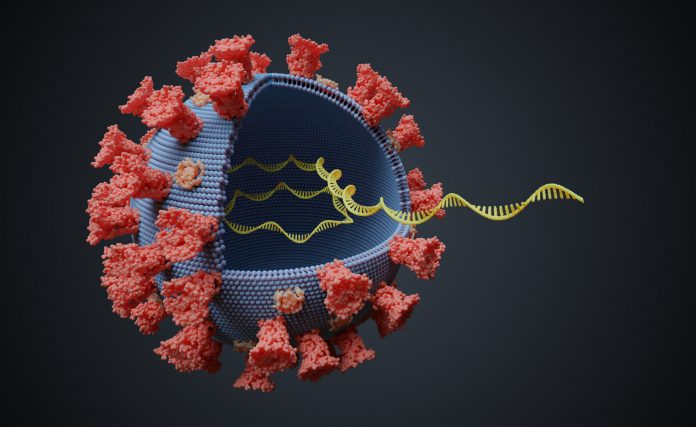
Chemical compounds targeting the 3D structures RNA takes on can block SARS-CoV-2’s ability to replicate in vitro, according to a study published Nov. 26 in Science Advances.
“These are the first molecules with antiviral activity that target the virus’s RNA specifically, so it’s a totally new mechanism in that sense,” says senior author Amanda Hargrove of Duke University. The molecules are in a new class called amilorides.
To infect cells, the coronavirus must enter them, deliver its genetic instructions in the form of RNA, and hijack the body’s molecular machinery to build new copies of itself. The infected cell becomes a virus factory, reading the virus’s genetic code and churning out the proteins it needs to replicate and spread.
Remdesivir, molnupiravir and Paxlovid are the only antiviral drugs for COVID-19 that have been FDA-approved or are in line for approval. They work by binding to viral proteins. But Hargrove and colleagues are taking a different approach. Amilorides take aim at the viral genome itself, and not just its linear sequence, but the complex three-dimensional structures the RNA strand folds into.
When the pandemic started the team was already investigating a potential drug candidates to fight another RNA virus — Enterovirus 71, a common cause of hand, foot and mouth disease in children. They had identified a class of small molecules called amilorides that can bind to hairpin-like folds in the virus’s genetic material and disrupt viral replication.
To see if the same compounds could also work against coronaviruses, the team tested 23 amiloride-based molecules against another, far less deadly coronavirus responsible for many common colds. They identified three compounds that, when added to infected monkey cells, reduced the amount of virus within 24 hours of infection without causing collateral damage to their host cells. These compounds also showed greater effects at higher doses. The researchers got similar results when they tested the molecules on cells infected with SARS-CoV-2, the virus that causes COVID-19.
Further work showed that the molecules stopped the virus from building up by binding to a site in the first 800 letters of the viral genome. Most of this stretch of RNA doesn’t code for proteins itself but drives their production.
The region folds in on itself to form multiple bulges and hairpin-like structures. Using computer modeling and nuclear magnetic resonance spectroscopy, the researchers were able to analyze these 3D RNA structures and pinpoint where the chemical compounds were binding.
Hargrove is hopeful about the applications for these types of molecules. The first small-molecule drug that works by binding to non-ribosomal RNA directly, rather than proteins, was just approved by the FDA last August to treat spinal muscular atrophy. “So while there are lots of challenges, it’s not impossible,” Hargrove said.
The researchers determined that the loops and bulges of RNA they identified have remained essentially unchanged by evolution across related coronaviruses in bats, rats and humans, including the ones that caused the SARS and MERS outbreaks. That means the team’s method might be able to fight more than just SARS-CoV-2, the virus that causes COVID-19.
“This is a new way to think about antivirals for RNA viruses,” Hargrove said.













